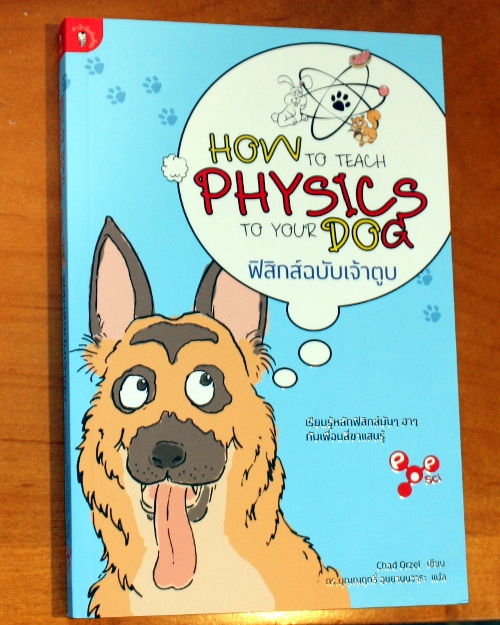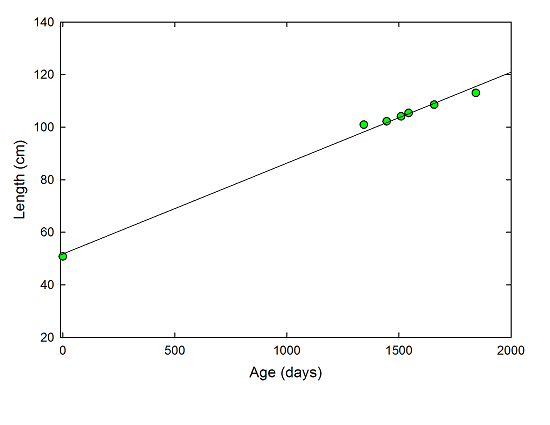We won a family pass to the Empire State Aerosciences Museum just across the river in Glenville, and since soccer was canceled for the holiday weekend, I took the kids over there this morning. They had a couple of their collection of decommissioned military aircraft open, including the Huey helicopter SteelyKid is thinking about co-piloting… Continue reading Get to the Chopper!
Month: August 2013
On Blogging, Aleph-Nought in a Series
It’s been a banner week for blogging advice, between John Scalzi’s thoughts on comments and Bee’s advice on whether to write a science blog. Both of them are worth a read, and I don’t have a great deal to add, but writing the stuff I’m supposed to be writing this morning is like pulling my… Continue reading On Blogging, Aleph-Nought in a Series
Laser-Cooled Atoms: Chromium
Element: Chromium (Cr) Atomic Number: 24 Mass: Four “stable” isotopes between 50 and 54 amu. Chromium-50 is technically radioactive, with a half-life considerably longer than the age of the universe, so… Laser cooling wavelength: 425nm, but see below. Doppler cooling limit: 120 μK. Chemical classification: Transition metal, smack in the middle of the periodic table.… Continue reading Laser-Cooled Atoms: Chromium
Wanted: The Hoosiers of Science
I’ve been revising a chapter on collaboration in science for the book-in-progress, making an analogy to team sports. And it occurred to me as I was trying to find a way to procrastinate, that while science is a highly collaborative endeavor, most of the popular stories that get told about science are not. There’s no… Continue reading Wanted: The Hoosiers of Science
Laser-Cooled Atoms: Lithium
Element: Lithium (Li) Atomic Number: 3 Mass: Two stable isotopes, masses 6 and 7 amu Laser cooling wavelength: 671 nm Doppler cooling limit: 140 μK. Chemical classification: Alkali metal, column I in the periodic table. Yet another greyish metal. We’re almost done with alkalis, I promise. Less reactive than any of the others, so the… Continue reading Laser-Cooled Atoms: Lithium
Laser-Cooled Atoms: Francium
Element: Francium (Fr) Atomic Number: 87 Mass: Numerous isotopes ranging in mass from 199 amu to 232 amu, none of them stable. The only ones laser cooled are the five between 208 amu and 212 amu, plus the one at 221 amu. Laser cooling wavelength: 718 nm Doppler cooling limit: 182 μK. Chemical classification: Alkali… Continue reading Laser-Cooled Atoms: Francium
How to Teach Physics to Your Thai Dog
The list of editions of my books in character sets I can’t read just got bigger: I got author copies of the Thai edition of How to Teach Physics to Your Dog. The cover is the “featured image” above (and I’ll copy it below for those on RSS), and I love the goofy tongue on… Continue reading How to Teach Physics to Your Thai Dog
Admissions and Hiring: Faculty Are Students in a Funhouse Mirror
In one of those Information Supercollider moments, two very different articles crossed in my social media feeds, and suddenly seemed to be related. The first was this New York Post piece by a college essay consultant: Finally, after 15 or so years of parents managing every variable, there comes the time when a student is… Continue reading Admissions and Hiring: Faculty Are Students in a Funhouse Mirror
Laser-Cooled Atoms: Strontium
Element: Strontium (Sr) Atomic Number: 38 Mass: Four stable isotopes, ranging from 84 to 88 amu Laser cooling wavelength: Two different transitions are used in the laser cooling of strontium: a blue line at 461 nm that’s an ordinary sort of transition, and an exceptionally narrow “intercombination” line at 689 nm. Doppler cooling limit: 770… Continue reading Laser-Cooled Atoms: Strontium
It’s Not Scientific Parenting Without Graphs
Early last year, we began marking SteelyKid’s height off on a door frame in the library. She occasionally demands a re-measurement, and Saturday was one of those days. Which made me notice that we now have a substantial number of heights recorded, and you know what that means: it’s time for a graph. The “featured… Continue reading It’s Not Scientific Parenting Without Graphs







